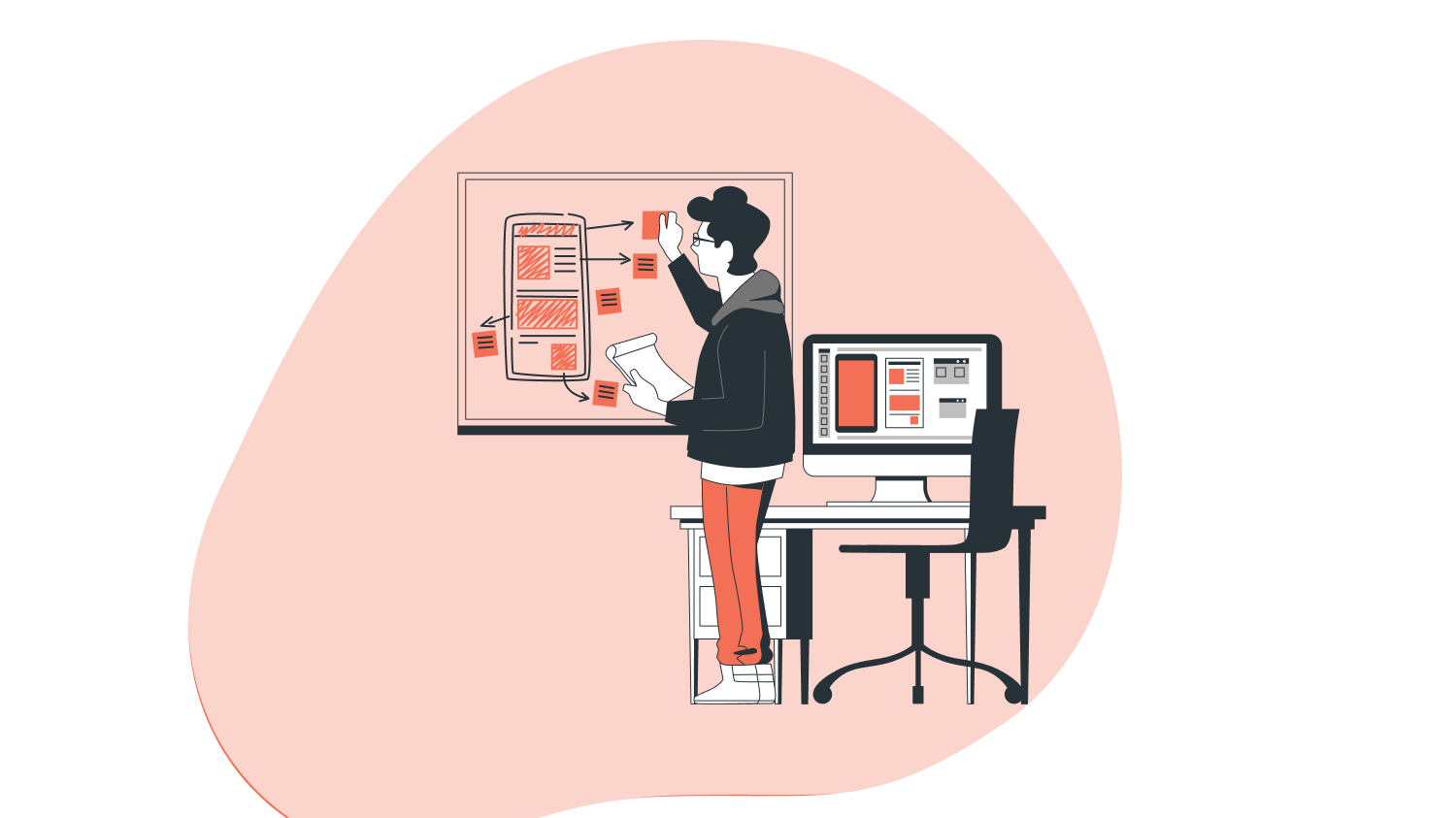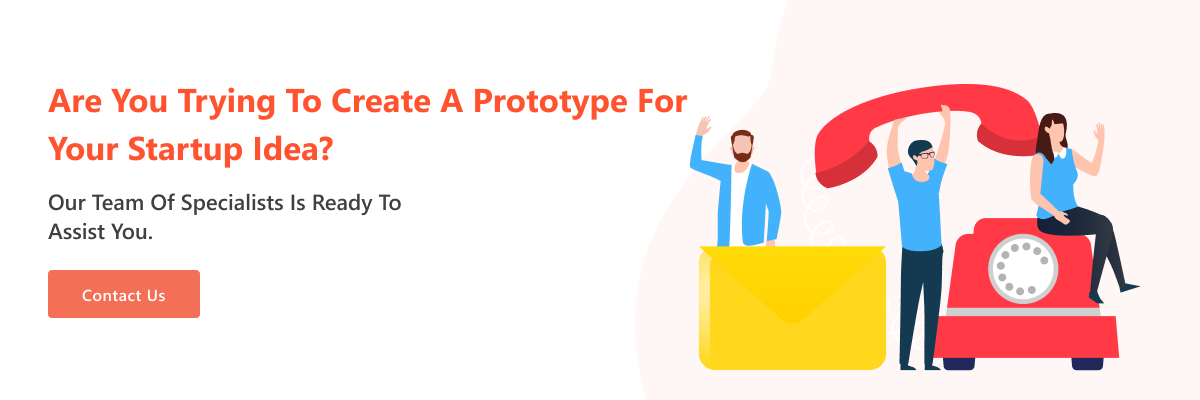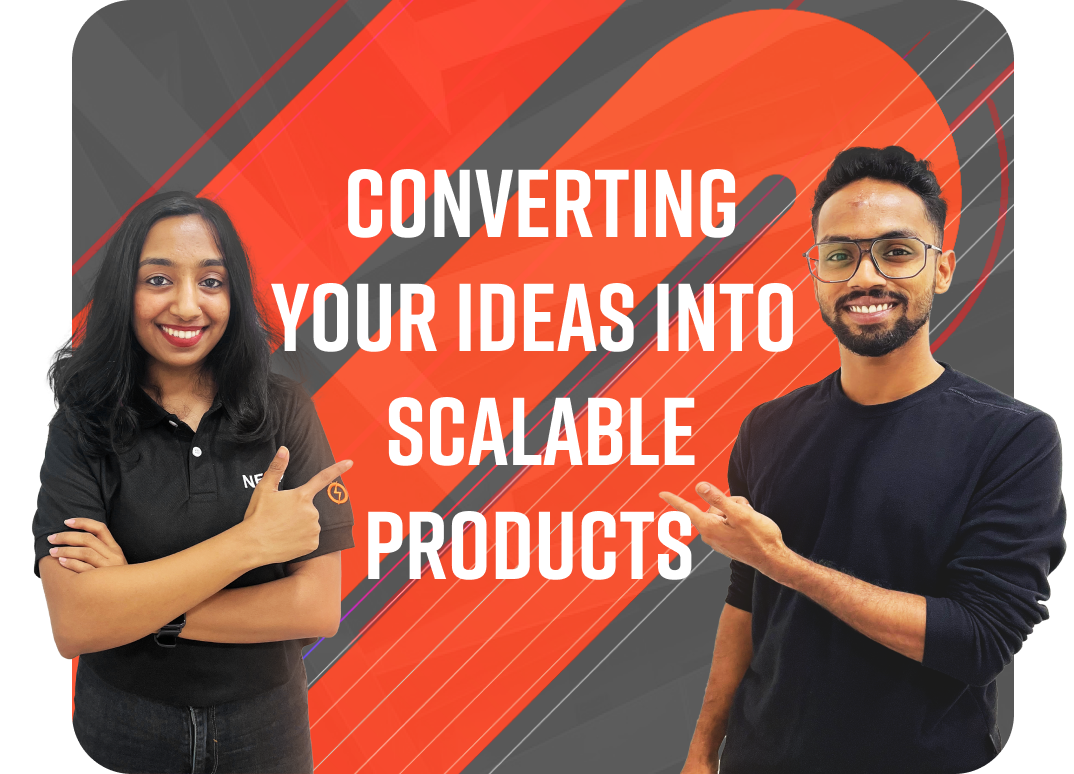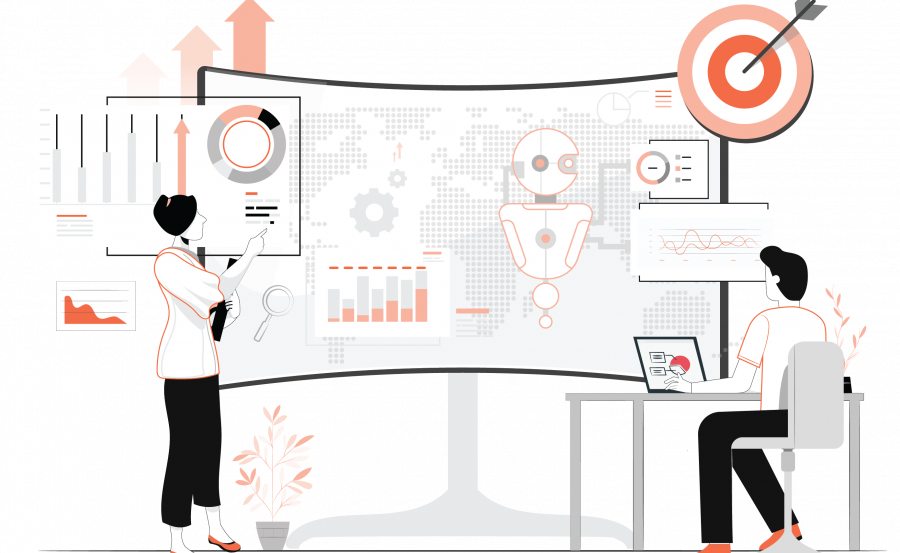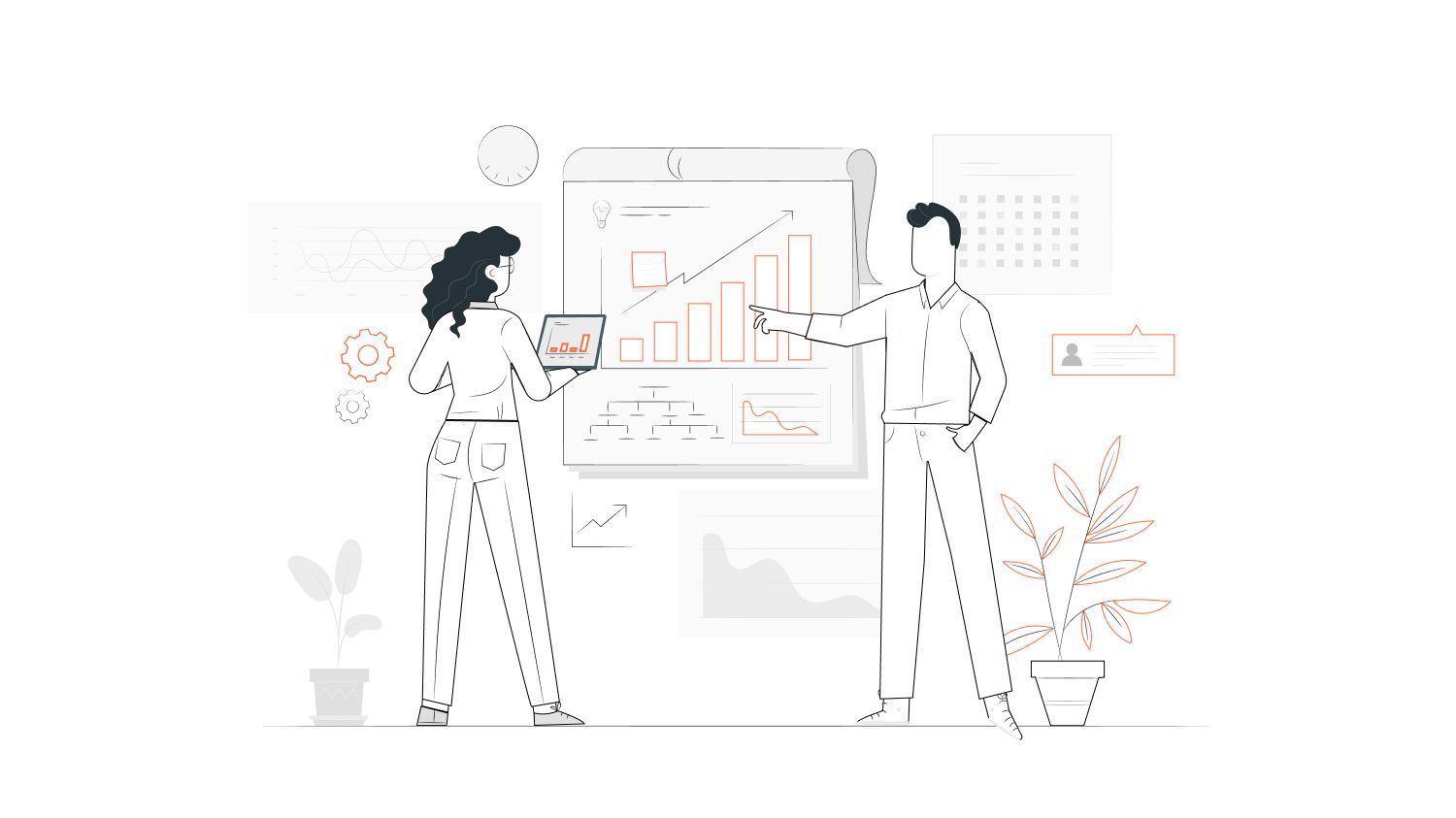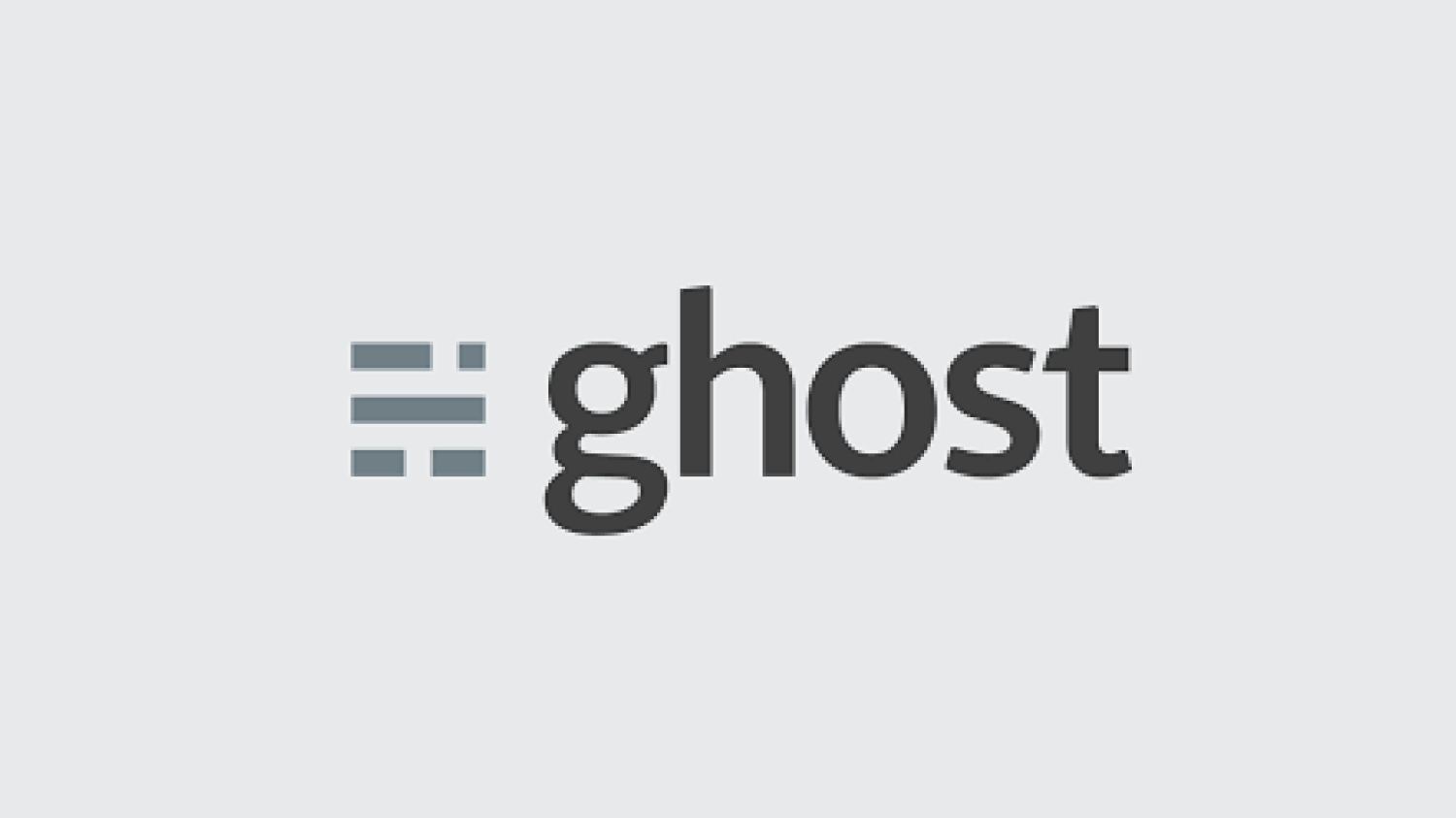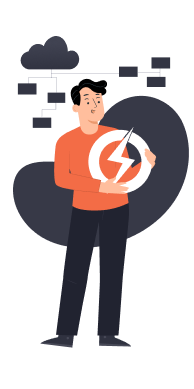Let’s start with the basics.
Do You Need a Prototype for Your Startup Idea?
Clearly, you’re on the fence about whether or not you need a prototype for your start-up idea. Let us explain why a prototype is essential for your startup business idea.
Picture this: you are the head chef at a Michelin star restaurant, and you have a brilliant idea for an exquisite new cookie. You head on over to your immaculately kept kitchen and start throwing ingredients together. Once your cookie is out of the oven, you do a little fancy plating and step back to admire your work.
Now, what’s the next thing you do?
Would you give yourself a pat on the back and say, “Job well done! Let me see what my patrons think of this!” or would you take a bite to see how it turned out?
You would, of course, taste your new dish to see how well your idea came together. And then, perhaps, you’d call your chefs together to get their opinion. Did you get the flavors and textures right? Do they have any suggestions that could make your cookie better?
Now, replace the culinary example with your startup idea. Your startup offering is your imaginary cookie. You can’t expect your startup product to turn out perfect on the first try, the same way you can’t expect your first batch of cookies to turn out perfect.
Here’s the deal:
You must taste it and adjust the recipe numerous times before perfecting it. And you need to perfect it before you send it out to your customers.
So, the answer is yes; you need a prototype for your startup idea.
What Exactly is a Prototype?
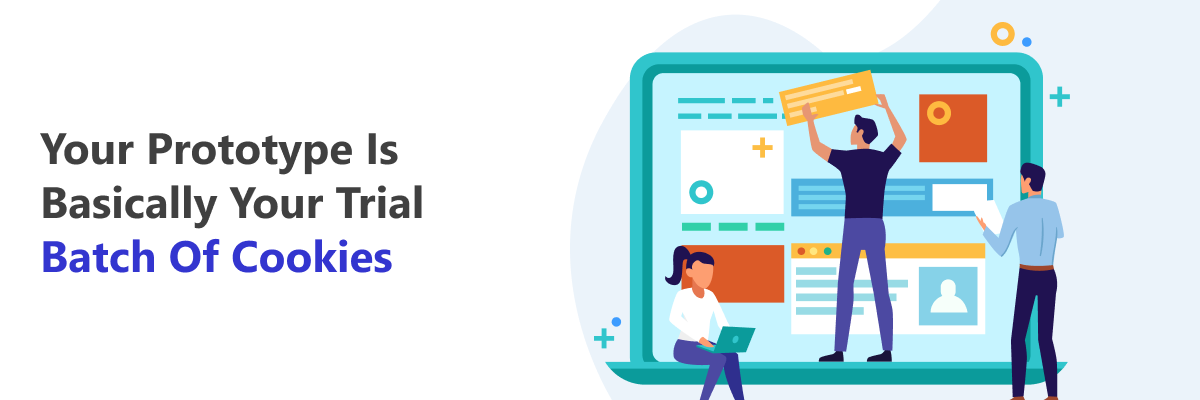
It’s your base product that you improve through several iterations. It is also a reference against which you can measure improvements in your product as your product development progresses.
Well, here’s a simple definition:
A prototype is the simplest form of your final product.
Designing a prototype is also the easiest and quickest way to see if your idea is valid and has a bright future. It is used to test the feasibility of your idea through trials and feedback. It is cheap to create and easy to improve upon.
In fact, design thinking and prototype development are closely linked. Your development team will tell you that they would have a hard time trying to improve your product without a prototype to work with.
Check out the Top 15 Design Tools For Mobile App Designers.
What are the Different Types of Prototypes?
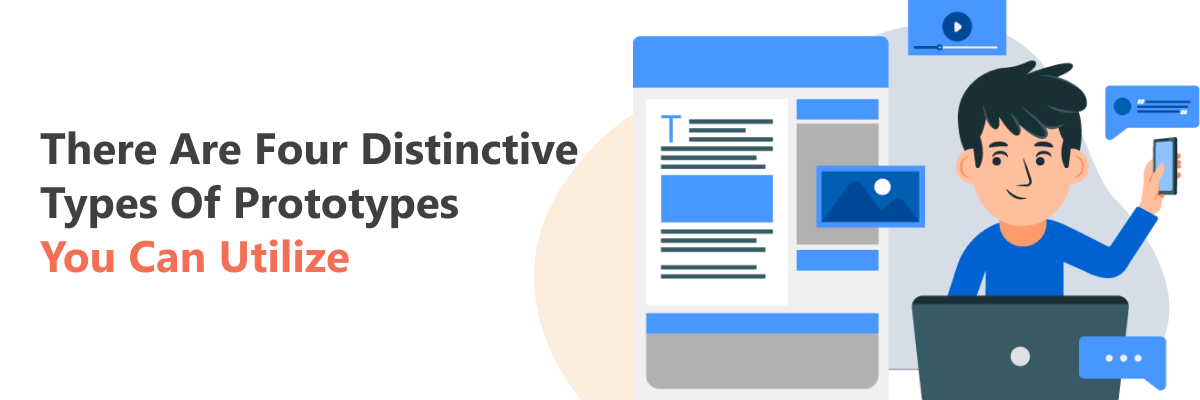
A prototype is an easiest and fastest (not to mention the cheapest) way to validate your ideas and associated assumptions. In fact, even a paper plane can be considered the very first prototype for a new aircraft model.
Let’s take a look at different prototypes:
Prototypes can be broadly classified into four distinct types based on their purpose.
1. Feasibility Prototypes
A feasibility prototype is, in essence, the minimal code your development team must create to understand whether you need to proceed with your idea or trash it. It is utilized in product discovery and to analyze and understand the technical risks associated with your product.
2. Low-Fidelity User Prototypes
These prototypes are just basic wireframes that you can use to convey your startup idea to end-users.
3. High-Fidelity User Prototypes
High-fidelity user prototypes are more advanced and interactive in nature and can be used to communicate your idea clearly to stakeholders.
4. Live-Data Prototypes
Such prototypes are the closest you can get to your actual product. They use real data and real traffic to simulate immersive user experiences.
You can also build hybrid prototypes which combine the features that are best suited for your needs.
Why is Prototyping Important for Startup Ideas?
It Helps You Put Your Idea to the Test
Do you have all the ingredients you need for your new cookie recipe? Will the different flavors you have in mind complement each other? Will your cookie come out well-baked or explode in the oven?
A half-baked recipe is not enough to add a new cookie to your menu. The same goes for your startup idea.
You need to put your idea to the test and see how feasible it is before you start planning a product launch party. Many ideas with merit have failed to evolve because they did not go through a constructive iteration process.
You should ask these three questions:
Is your idea technically feasible?
Is the design possible to create?
Do your team members have the expertise to scale up your idea?
No matter how simple and basic your prototype is, it will give you your first look at how well your idea holds up practically. It’s a concrete representation of your intangible idea.
And sometimes, one long look at your prototype is all you need to know whether you should take the operation forward. Prototypes allow you to scratch your idea and start over before it’s too late to do so.
If your product idea is not feasible, you can analyze the prototype to see what needs to be changed or tweaked to make your final product viable.
The entire product development process is a learning curve as you’re working with a new product or trying to improve an existing one. And your prototype will be your learning aid which will help you improve the entire process.
Prototypes also help you detect design problems early on in the development process of your idea. You can fix these problems one by one as you progress rather than have them accumulate a wealth of technical debt towards the end of your product development cycle.
It Creates Opportunities for Innovation
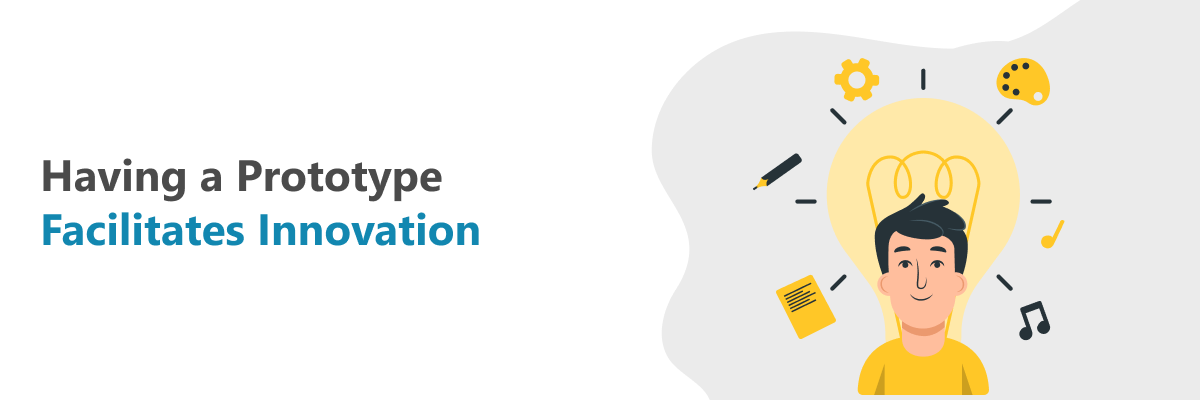
As a chef, you would want your cookie to stand out from the run-of-the-mill cookies that clutter supermarket shelves. Your cookie needs to be gourmet. Unique. Full of interesting flavors that will keep your customers coming back for more once they get a taste.
So, you take your first batch of freshly baked cookies and hand them out to your team of chefs to get their feedback. Perhaps one of them suggests a pinch of more salt to enhance the cookie’s sweetness, or a dash of cinnamon to make it smell like Christmas.
As you move around the room and brainstorm, you will understand how to improve your recipe to suit your customers’ palates.
Similarly, you are trying to create new niches in your marketplace with your startup idea. You want to give your consumers a great product or service they simply cannot refuse. And to do that, you need to ensure your product is exposed to innovative features and capabilities.
The more innovative your final product is the higher its value in the marketplace. These innovative ideas will come from your team when you have a prototype to share.
You can hold brainstorming sessions even before you have a prototype, but these sessions will be much more effective when there is a visual representation of your idea.
If you have a prototype, it is much easier for you to explain your idea. Your team won’t have to try to read your mind to understand your startup proposal. They will know what you expect out of your startup product, which will help them put their two cents in.
As your prototype develops, you get a chance to improve your idea continuously till you’re sure it’s reached its peak of perfection. At the end of the day, when you roll out your product to the public, you can rest assured that it’s the best version of your initial idea.
Suggested Read: 30+ Most Successful Small Business Ideas 2021.
It Aids You in Resolving Problems Quickly
If you are used to making your own breakfast (and have no aversion to pancakes), you will already know that the first batch usually comes out a little wonky.
Maybe the mixture is too runny, or the edges are too irregular. It might even stick to the bottom of your pan and make you exasperated.
You will adjust the pancake mixture before you pour out the next one with a silent prayer. And as you make more pancakes, they turn out better until you’re flipping perfect pancakes with the right amount of fluffiness.
Your prototype is your first batch of pancakes. It might come out a little wonky, but it paves the way for a perfectly balanced startup product.
Here’s how you do it:
You can use your prototype to fix the obvious kinks in your product idea before starting the actual product development process.
Since the product development process is iterative in nature, it won’t hurt to improve your prototype with each new development.
Identifying and resolving the problems that might accompany your startup idea at the initial stages is important.
This is because simple issues with an easy fix can develop into complex issues that eat up your time and resources if left unchecked for too long.
Prototypes give you a better understanding of the potential risks that your startup idea could face. You can use this clarity to develop your idea further while also resolving the problems along the way.
If your prototype is advanced enough, you can also think about patenting your startup idea even as you are still working on it.
Your prototype will support the feasibility of your idea and enhance your chances of getting your patent approved.
This way, you can ensure that no one can claim credit for your idea before you have a final product to prove your case.
It Improves Your Project Planning Process
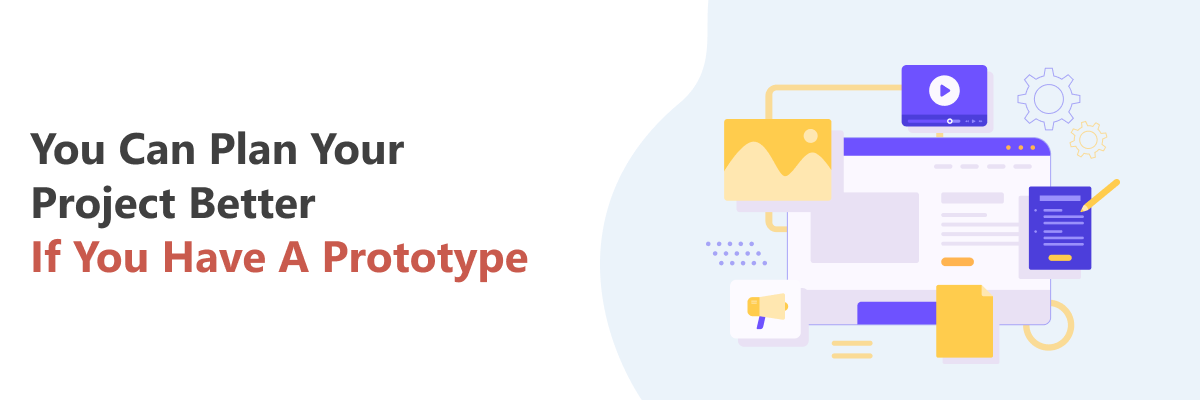
Even if you just want to bake a cookie, planning is involved.
You will ask yourself these questions:
Are you feeling skeptical?
What are the ingredients that you must use?
How sweet do you want your cookie to be?
Do you want a chewy cookie or a crispy one?
How about a cookie that is crunchy on the outside but soft and gooey on the inside? Do you need to buy chocolate chips? How much money do you need for the ingredients?
And all this is just for a cookie!
So, imagine how much planning needs to go into turning your startup idea into a minimum-viable product.
Planning is, without a doubt, an integral part of kick-starting your startup idea. Without a business plan to back you up, you might as well be planning to fail in your endeavor.
You need to plan your product development, the resources you will need, and the budget that must be allocated to the project. You must also set realistic deadlines to launch your product at the right time.
Having a prototype will definitely help you refine your planning process. It gives you the clarity you need to streamline your project in the most optimal way. Once you know what roadblocks to expect while turning your startup idea into reality, you can plan and allocate enough time and resources to remove those roadblocks.
A prototype also helps you determine your product’s scalability and your team’s skill to take it forward. If you need to outsource your project, it is always better to have an idea in advance.
Outsourcing your project midway can create an avalanche of problems, and prototypes will help you understand your team’s capability to handle your final product.
It Saves You Big Bucks in the Long Run
Let us assume that you decided your cookie recipe is the best without actually baking a sample batch for your team to try.
You figure you might as well add it to the menu and surprise your patrons. You do the ingredient shopping in bulk and start baking your mitts off.
Now, what if your cookie turns out too salty?
What if it does not appeal to your customers’ taste buds?
You would lose face in front of your audience, for one.
You will also be left with pounds of flour that you will have to repurpose to get back at least some of the initial capital you invested in your cookie recipe.
You could have avoided this whole mess if only you’d run your dessert by your teammates first and taken feedback from them. The feedback thus obtained would have helped you tweak your recipe to make better cookies.
Simply put:
Your startup idea is the same. It’s raw and rough and needs to be polished to a sheen before you can present it to your target audience.
And doing the polishing in the initial stages will save you a lot of money in the long run.
The prototype you develop will let you identify bugs and errors early in the product development process. You can easily spot the weaknesses in your product idea and eliminate them.
Your teammates can resolve these issues before they become full-fledged and more time-intensive.
A stitch in time saves nine, after all. And a bug fix done on time saves you the trouble of allocating more resources to fix the issue later in the developmental stage of your product.
So, you need to ensure that your product is free of defects before developing it into a more mature one. And for this, of course, you need a good prototype.
It Gives You the Chance to Market Your Idea
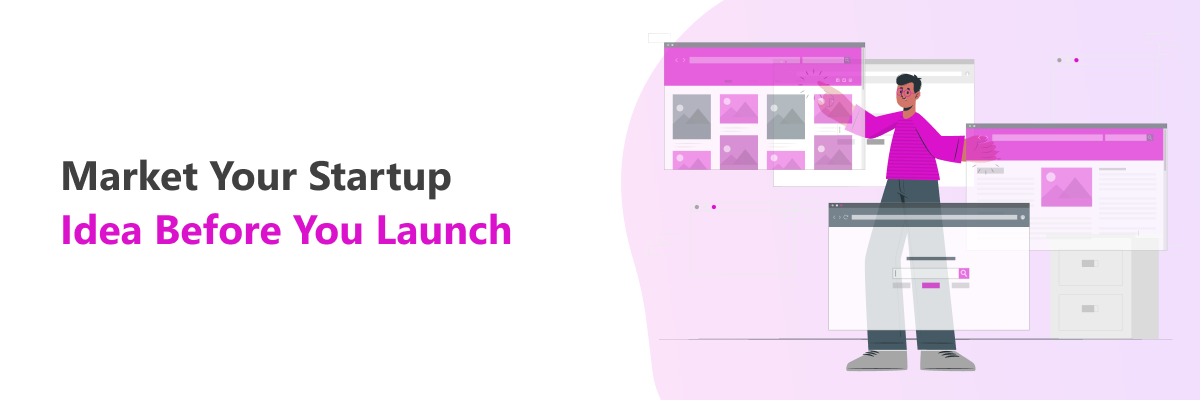
You’ve done the hard work. You took feedback from your team and tweaked your cookie recipe until it tasted like a little holiday spirit. And now you’re ready to tell the world about your little treat.
This means you must add your new dessert to the menu and create awareness among your audience. Your customers need to know that you have something new to offer.
But what if they already knew?
What if they’re clamoring to place an order even as your fresh batch of cookies is just coming out of the oven?
Similarly, what if your target audience was already educated about your final product? What if you can have sales from day one of your product launch. It would save the waiting period between your product launch and the actual sales.
Having a prototype for your startup idea lets you do just that! You can start marketing your product before starting the product development process. All you need is a solid prototype that will give your audience an idea of what to expect when you finish your product development.
One of the most appealing aspects of a prototype is that it can be visually represented and is easy to understand. You could use a high-fidelity user prototype to let your potential customers engage with the product as and when it’s being developed.
It Attracts Potential Investors to Your Startup
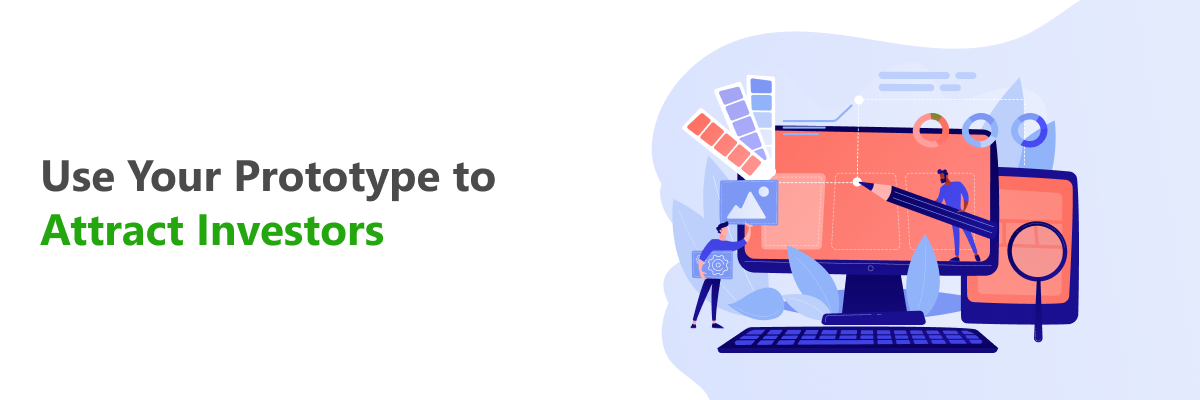
Here’s a fact that most founders know:
Your startup requires funding to get off the ground. Investors play a significant role in the continued success of a startup.
And this means you will need to find an investor or group willing to back your idea from inception to completion.
You can definitely convince an investor to be a stakeholder in your startup with just a unique and brilliant idea.
You just need the right pitch and just a little bit of luck. It will, however, be quite challenging to get good investors to take an interest in your idea if you have no means of validating the idea.
Think how much more effective and easier it would be if you could show your investors your idea instead of talking about it. After all, if a picture is worth a thousand words, an exhibition is gotta be worth at least a million words. So, why just tell when you can show and tell?
Here’s how a prototype can help your startup:
A prototype reduces the uncertainty of a new product and builds faith in your investors. If you can convince potential investors that your startup idea will definitely be a success, half your work is done.
And with the right product prototype, you can show investors why your startup would be a worthwhile investment for them.
If your prototype is marketed just right, it could even create a buzz that will attract potential investors instead of you going to them.
Even investors who are not easily parted with their money will perk up if you can show them the potential financial benefits of your final product. Help them visualize your success together with a prototype and secure their confidence.
Also, read the 17 Vital Factors Venture Capitalists Evaluate When Deciding to Invest in Your Startup.
It Lets You Connect With Your Target Audience
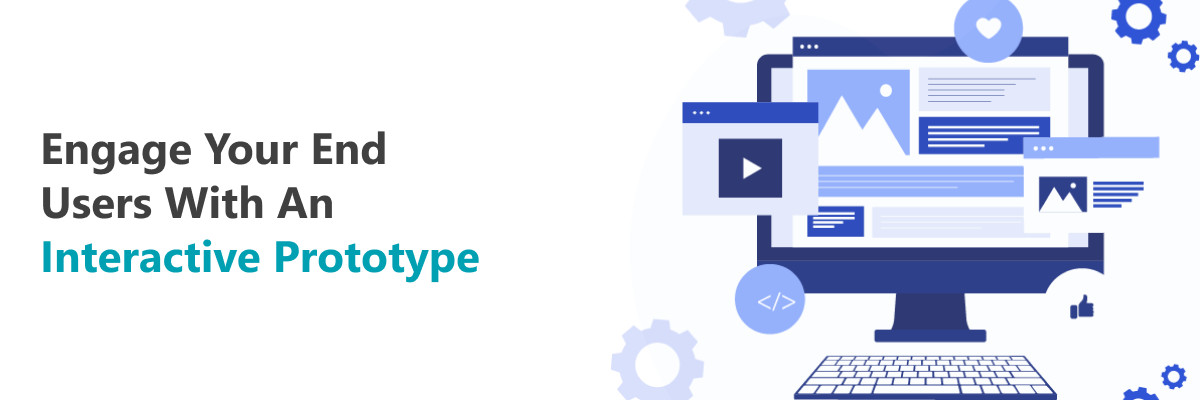
Your audience is your final target.
What is the point of launching a startup and developing an idea to perfection if it does not benefit anyone?
Here’s the deal:
If your offering does not resonate with your target audience, you cannot market and sell it effectively.
Knowing what your audience wants and needs is extremely crucial.
And for that, you must ensure that your end-users are also a part of your product development process. They will have valuable feedback to give, which will steer your final product in the most desirable direction for your audience.
However, you cannot go to your restaurant’s patrons with an empty plate and describe the food you can offer them sometime shortly.
You need to be able to give them sample cookies to taste and analyze. This gives them a chance to be critical of your offerings and gives you a chance to understand your customer preferences.
User feedback plays an important role in your product iteration processes. Your product discovery is complete only when you fully understand your audience’s needs.
You can engage your users with a high-fidelity user prototype. This will allow you to watch end users interact with your final product and note their reception. You can improve the overall user experience by listening to your end-users and incorporating their feedback into your product development process.
If the users see any hurdles, they will immediately alert you, sometimes even with suggestions on rectifying them. This will help you address customer pain points even before your product hits the marketplace.
In addition to giving you a bird’s eye view of your end consumers’ behaviors, a prototype will also familiarise your end users with your final product. They will embrace it more easily when you release the final version as they are already accustomed to your product’s capabilities and functionalities.
It Facilitates Enhanced Team Collaboration
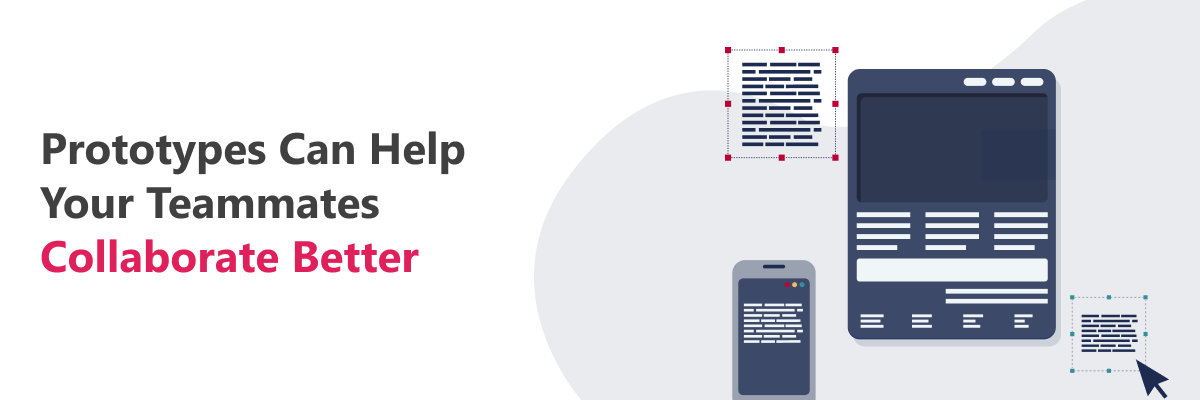
Launching a successful startup idea is always a team effort. You need to surround yourself with the right people to make your dreams a reality.
Your team members must be highly skilled and driven individuals who are just as passionate about your startup idea as you are.
Your team of chefs will have much more to bring to the table regarding improvements and suggestions if you give them prototype cookies to sample. You can view a prototype as a starting point for brainstorming sessions.
A product prototype will help you involve all your team members in the project from the start. This means your creative ideation team will coordinate better with your technical implementation team.
A prototype will improve the coordination and communication of all your different teams, giving them a visual model of your final product to work with.
It also facilitates more discussions and combines the ideas of your creative and technical team members together. This way, your final product will balance form and function well.
Your teammates will also understand your startup idea more clearly and easily through the prototype you build.
If you are a non-technical founder, a prototype ensures smoother communication between you and the technical team. It ensures your ideas are not lost in transit and reach your teammates properly.
Read on to learn How to Optimise Your Team for Business Growth.
It Improves Your Overall Brand Value
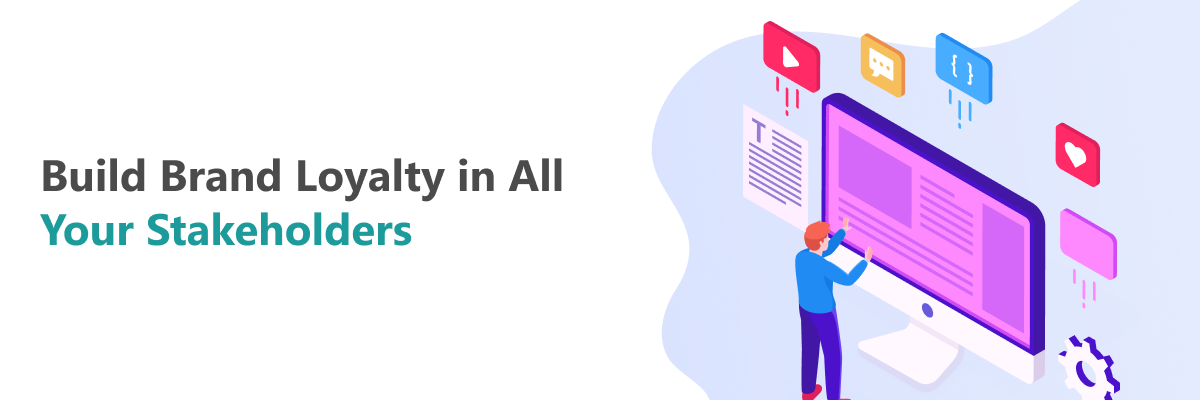
Having a prototype to back up your startup idea will validate your endeavor in the eyes of all your stakeholders. This can include your team members, investors, and end-users. You will be able to convey your startup plan more effectively to create trust in your idea and inspire confidence.
A prototype helps your team members have more faith in the final product, making them work harder to push boundaries. Your investors will be happy if they see how well your product can do in the marketplace once it is launched.
And your end users will connect with your business and build a rapport while the product develops. Once launched, they will find it easy to accept your final product, as they are already familiar with the prototype.
Prototypes can also boost your brand image before your official launch.
This will help you build a loyal follower base who have the potential to be your customers when you’re ready to go live. If you manage to hook users to your product with prototypes, you will have it easy when it’s time to convert customers and retain them.
Your stakeholders will also find it easier to access your product’s transformation when you have a prototype they can refer to. It works as a great way to increase your startup’s credibility and ensure its sustainability over the years.
Conclusion
In essence, having a prototype can help you pre-sell your idea effectively and to a bigger audience. You can have your customers ready for your product launch instead of having to spend big money on accelerated promotions. Factor in the amount of time and resources you can save, and you’ll understand why building a prototype is a great idea. In fact, a prototype is a prerequisite for every product development process to be successful.
So, now you know why you need a prototype for your startup idea, and if you need expert assistance to build one, we, the NeoITO team, can help you out.
